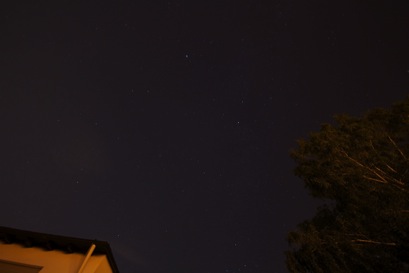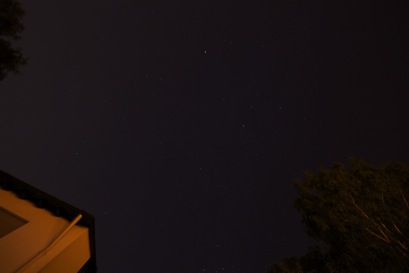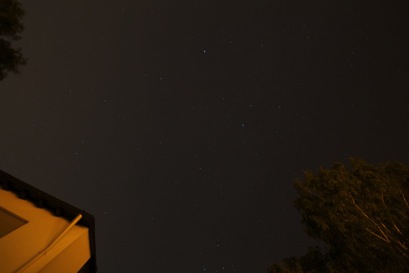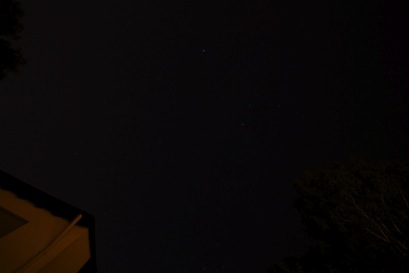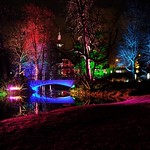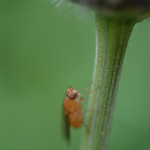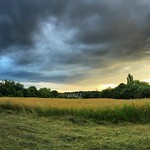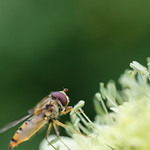As many of you are probably aware, yesterday night the Perseiden Meteor Shower was visible. Of course I had to go out and try to catch a meteor on a photo. Unfortunately, I didn’t but still I got several beautiful images of the night sky above our house and wanted to share some different images taken with different shutter speeds to show how much the shutter speed changes the lighting in a longtime exposure shot (and the ISO, too).
First of, the different in ISO on the lighting of the sky (please view the large versions to get a real impression of the differences). The first photo was taken at ISO 400, the second at 250 and the third one at ISO 100, as you can see the higher the Iso the more details and light you have in the photo (the 250 is a bit misleading because the camera was positioned slightly more to the right were there are street lamps). But with increasing the ISO you also increase the noise in the image, something that you will have even at a low ISo when you are taking long time exposure photos). Because of that I decided to try the bulb mode on my camera and do even longer exposures.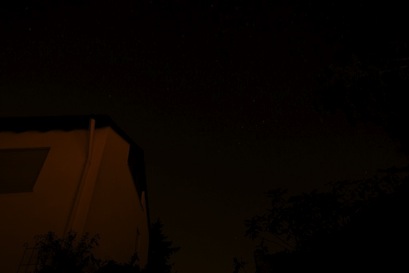
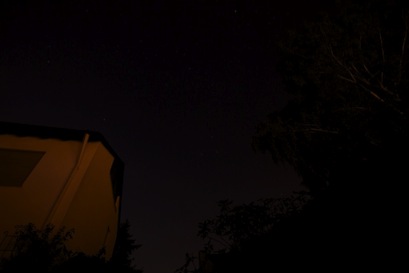
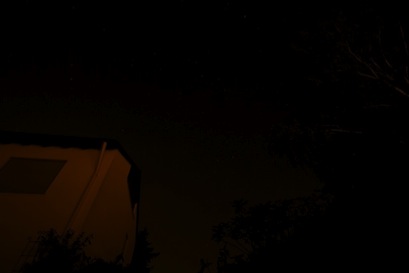
Bulb mode is the name for photos you want to take at even longer exposures than 30 seconds. With my camera, the Canon 7D, there is an entry for it on the mode dial like there is for shutter priority and aperture priority. When you choose that you simply decide on the aperture, which I set at f4 and then you simply hold down the shutter button for as long as you like. This is best done if you have a remote shutter release, which will usually have the option to secure it so you don’t have to hold down the button the whole time.
With that mode the following four photos were made. The ISO was set at 320 because I felt that gave me a good middle ground between noise and light sensitivity and the shutter speed fluctuated due to my holding down the shutter longer or shorter, since I didn’t time myself, I simply went by feeling. The first photo has a shutter time of 64 seconds, the second is 51 seconds, the third 77 seconds and the fourth 19 seconds.
As you can see, the difference in light and especially ambient light, something I cannot get rid of living in a small city and relatively close to the big airport in Frankfurt (half of our sky is almost invisible to the east due to the light pollution from the airport). I think the 60 seconds is a pretty good middle ground for my area, since the sky is still relatively dark and bluish (all of the shots here haven’t been processed or edited) but you see lots of stars and even a whole lot of small stars you cannot see with your eye from the ground.
One last tip if you go out for such shots: be sure to check your settings and take the lens cap of before you go out into the night…. I went out twice to take photos, the second time I forgot to take the lens cap of for the first shot – had I taken it off, I would have a photo with a meteor in it 🙁Tweet
